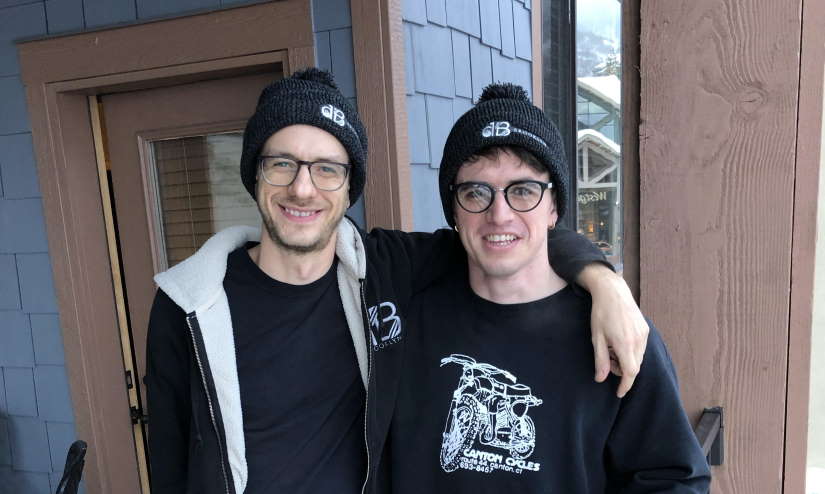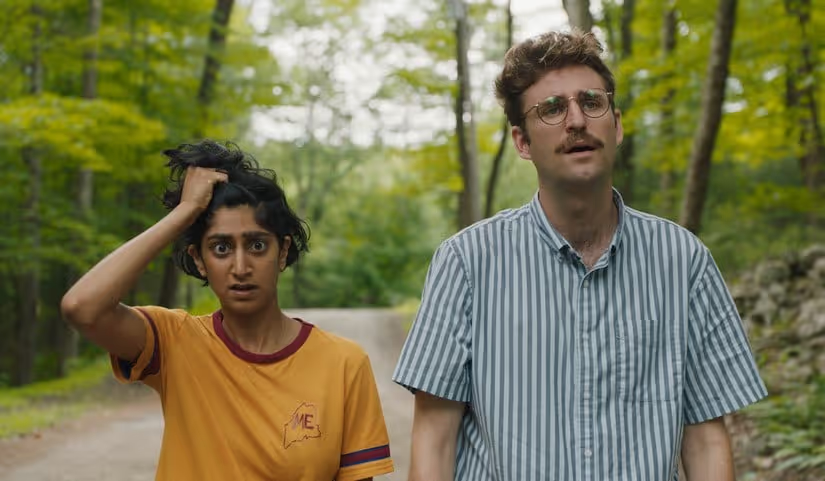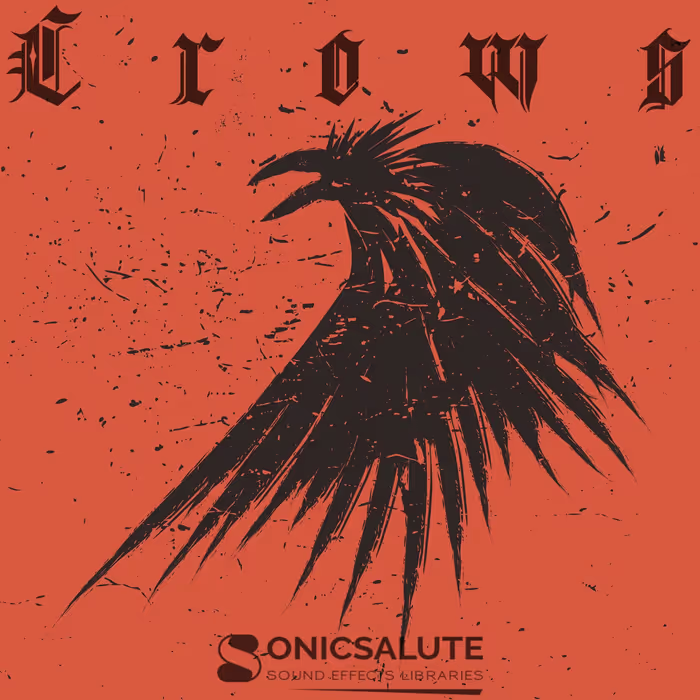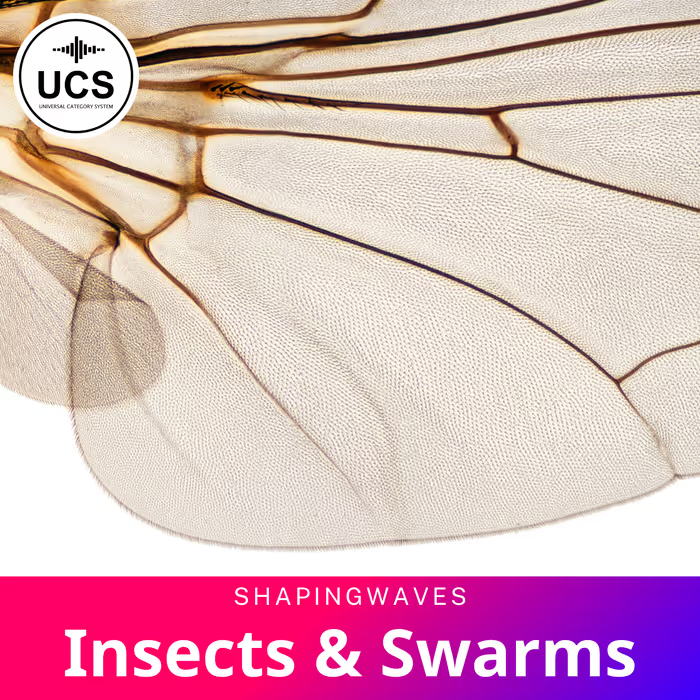In Save Yourselves!, writers/directors Alex Huston Fischer and Eleanor Wilson good-naturedly poke fun at two city-dwelling millennials who trek to the woods of upstate New York to disconnect from technology.
Unfortunately, their self-imposed isolation makes them miss the message that aliens have invaded. The duo has to fend for themselves and fight off the aliens — all without help from the internet.
For Save Yourselves!, supervising sound editor Timothy Korn, at Dungeon Beach studio in Brooklyn, NY, was tasked with twisting reality to create a New York forest sound that’s nearly natural — natural enough to not sound alien, that is. But this ambience isn’t just background noises filled with local birds and frogs. It’s actually the alien in disguise. Here, Korn talks about creating the right degree of tweaked-out frog croaks, designing alien movements and expressive vocals, adding humor via sonic hyperbole, and more!

When did you get involved with Save Yourselves!? Can you tell me about your collaboration with the filmmakers? What were their goals for sound and how were you able to help them achieve that?
Timothy Korn (TK): I’ve known director Alex Huston Fischer for many years and have been working with him for a little over a decade. Alex is great, and on this film I got to meet his girlfriend Eleanor Wilson, who was the other director. She’s also great. They’re both really good communicators and know what they want while still giving you freedom in your work.
They gave us the script before they shot and we had several conversations about how the major scenes might go and what might change. From the beginning, we were very much on the same page about the direction of the alien’s sounds.
In this film, the two protagonists — Su (Sunita Mani) and Jack (John Reynolds) — are city-dwellers who take a trip to a cabin in the woods. So the idea for the alien was that if someone who wasn’t too familiar with the sonic environment of upstate New York (like Su and Jack) were to hear the creature, they might not recognize that this wasn’t a natural/normal sound. They wouldn’t know that something was ‘off.’
We knew from the beginning that we wanted this alien to make a sound that was very natural and organic in nature but not of this planet.
The alien is a very tactile creature. It has this tendril that comes out from its ‘mouth.’ We don’t specifically define its body parts, but the sounds do help to define what shoots the tendril, how the animal reacts, how it emotes, and that sort of thing.
We knew from the beginning that we wanted this alien to make a sound that was very natural and organic in nature but not of this planet.
Can you tell me more about the alien sounds? Were you using mostly organic sounds as source material and then manipulating those to sound a bit off?
TK: I worked closely with sound designer Tommy Stang, who is also our main Foley artist here at Dungeon Beach and he was also the re-recording mixer on the film.
There are two aspects of the alien: physical and emotional.
The physical aspects are how it moves across the floor and when it shoots its tendril out and what kind of devices cause these things to happen and how it does all these physical things. That was a combination of Foley and design.
There are also the emotive aspects, which were a combination of source sounds and original recordings. These included animal sounds from frogs, birds, cats, and raccoons — all animals you might find upstate somewhere in New York. I combined all of these sounds and cut them together, choosing the most useful parts to encapsulate into this alien.
I loaded the pieces into Krotos Dehumaniser and Reformer and performed them. Once I had hours of me making weird sounds into a microphone, I cut the audio files apart and labeled sections as different emotions.
I create a lot of my own recordings and so the thing I love about these tools is that it gives you a new way to express your sounds. You get to play with the sounds in an emotional kind of way…
We then had a sound design review with Alex and Eleanor. We were deciding which sound we wanted for when the alien was scared or when it’s attacking or when it’s curious, for example. We made a giant sound bank filled with sounds and textures and cut those into the movie, trying to place them for both the comic and realistic effect.
What does this tendril sound like? Is it slimy or sticky? What are the sounds you made for the physical aspects?
TK: A lot of that was created from food being thrown around or chewed. Tommy’s Foley mostly relied on mouth sounds. He recorded things like his tongue moving around and some heavy rustling sounds for the alien movements. (The alien has this animal-like quality. As they say in the film, it’s kind of like sonic the hedgehog.)
The Foley helped to add this organic nature to the alien. It was literally sounds of Tommy’s mouth and body reacting as the alien would react.
How were you able to use environmental sounds to create this fish-out-of-water feeling for these city-dwelling millennials?
TK: When we’re in the city, it’s busy and hectic. But once they are out of the city, the environment gets really quiet. We did this to emphasize the fact that there are natural sounds happening, like there are moments when you hear frogs (albeit strange frogs that are actually the alien in disguise) and it’s just enough sound to make the characters feel like this is what it sounds like out of the city. To them, nature is really quiet except for these weird sounds.
But those sounds actually end up being an alien invasion that is happening. But it still feels organic.
Also, there’s a scene in the film where the characters are driving around in this Jeep but the Jeep feels like a giant tank. The protagonists know how to drive, but they don’t typically drive. It’s not their usual means of transportation. So when driving this Jeep, it feels like they are maneuvering this giant tank that they can’t get out of first gear. It’s pretty funny.
There is also this absence of humanity and human sounds while they’re in the woods. You don’t really hear other humans. They’re kind of isolated and there is an eeriness to that. Normally if you go upstate, you will hear someone working in their yard or something at some point. But in the film, there is a definite lack of that.
Near the end of the film, things start to get weird. That was definitely our favorite part to work on. There’s a fight scene that happens with the alien, which is very intense sound-wise. And they discover the alien space ship which reacts to the characters. That is also an organic device.
For the end of the film, the sound is rather abstract and weird. That was the most fun because we got to take so many liberties, and try different things to find what the ship might sound like, and what happens when they interact with it, and what happens when they step into it.
What does the ship sound like? Were your source sounds metallic?
TK: No. It’s more of a musical reaction. For this section, we were working with composer Andrew Orkin, who was giving us synthy textures that were present within the music. We tried to re-create similar synthy textures but using different aspects of the sound libraries that we had captured for the “pouf” — which is what the alien is called.
If you mangle and twist and turn sounds enough then you get something brand-new out of them that still has some kind of tie back to its source sound, which I feel makes it sound like a complete palette…
But it doesn’t sound anything like the pouf. If you mangle and twist and turn sounds enough then you get something brand-new out of them that still has some kind of tie back to its source sound, which I feel makes it sound like a complete palette, a complete environment that has a relationship to itself.
What were some of the tools that you used to manipulate your source sounds?
TK: For the ship sound and textures, we were using mostly Reformer. And we were using Dehumaniser mostly for the voices, to make the alien’s reactions.
I create a lot of my own recordings and so the thing I love about these tools is that it gives you a new way to express your sounds. You get to play with the sounds in an emotional kind of way, which has more impact to the sounds. A sound that has an inflection that goes up at the end has a different feeling from a sound that goes down at the end. The first way might feel like it’s questioning while the latter would feel defeated. So the great thing is that you can take all the sounds that you recorded in the world and perform them. You can perform them in many layers and in multiple ways. It’s great.
What was your most challenging scene for sound and what were some of your creative solutions for that scene?
As we got to the end of editorial, I feel like we were exploring the textures of the sounds almost up to the mix because there were so many different avenues we could have gone down for the space ship especially.
TK: The end fight was challenging because there was so much going on. You have to be choosy with the sounds you’re using. There were alien noises, loud score, lots of dialogue and screaming, and lots of impacts and reactions to everything. You have to choose which sounds get to be in the front — which sounds will take precedent over the others.
As we got to the end of editorial, I feel like we were exploring the textures of the sounds almost up to the mix because there were so many different avenues we could have gone down for the space ship especially. It has this musical component to it that feels similar to the score but isn’t similar to the score. There were so many sounds to choose from, and you have to choose the sounds that are telling the story the best.
In terms of sound, how was Save Yourselves! a unique experience for you?
TK: This was one of our best, most fun filmmaking experiences we’ve had because of the liberties we got to take with sound. Working with Alex and Eleanor was fantastic. I got the script before they started shooting. It was amazing to see the film come to life and to talk about the aspects of what the alien might sound like, to see it from a VFX standpoint and a practical effects standpoint and to develop this alien all the way through to the end and then see the film go out into the world. It has been a very rewarding experience. Everyone who has worked on it here has been absolutely in love with it.





